Scientists of the research center Forschungszentrum Dresden-Rossendorf found a way to replace the amorphous or nanocrystalline silicon in thin film solar cells, which have a low efficiency, by a nanosponge made of silicon. It promises to be a good light absorber while improving the electrical yield of the solar cells.
May 25th, 2010
Read more
Dr. Joshua Zimmerberg, senior investigator of the National Institutes of Health, USA visited the Institute of Biophysics at the Chinese Academy of Sciences and delivered a lecture at the invitation of IBP director Professor XU Tao.
May 25th, 2010
Read more
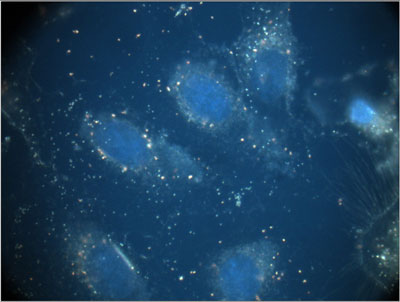 Future pandemics of seasonal flu, H1N1 and other drug-resistant viruses may be thwarted by a potent, immune-boosting payload that is effectively delivered to cells by gold nanorods.
Future pandemics of seasonal flu, H1N1 and other drug-resistant viruses may be thwarted by a potent, immune-boosting payload that is effectively delivered to cells by gold nanorods.
May 24th, 2010
Read more
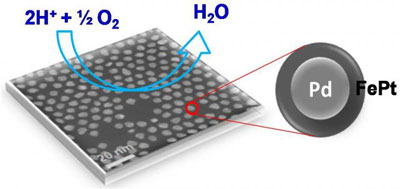 Researchers have created a unique core and shell nanoparticle that uses far less platinum yet performs more efficiently and lasts longer than commercially available pure-platinum catalysts at the cathode end of fuel-cell reactions.
Researchers have created a unique core and shell nanoparticle that uses far less platinum yet performs more efficiently and lasts longer than commercially available pure-platinum catalysts at the cathode end of fuel-cell reactions.
May 24th, 2010
Read more
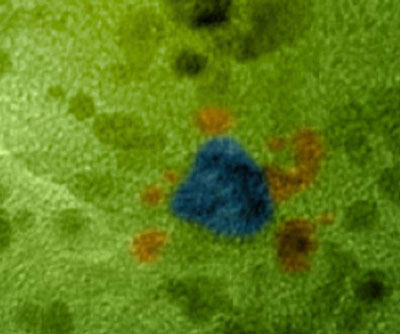 Tiny gold particles will surround themselves with even smaller platinum bits, creating a complex structure that could turn a common preservative, formic acid, into electricity in a fuel cell.
Tiny gold particles will surround themselves with even smaller platinum bits, creating a complex structure that could turn a common preservative, formic acid, into electricity in a fuel cell.
May 24th, 2010
Read more
Materials science research at Texas State University-San Marcos will soon add a new scanning electron microscope (SEM) to its cutting-edge facilities.
May 24th, 2010
Read more
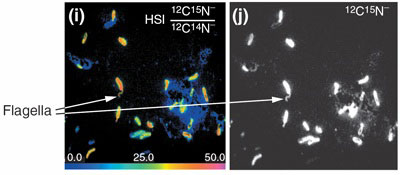 The National Science Foundation's Major Research and Instrumentation (MRI) Program recently funded a $3.7 million NanoSIMS imaging mass spectrometer for 13 Arizona State University scientists and a large number of collaborators working on diverse topics involving both soft (biological) and hard materials (e.g. minerals).
The National Science Foundation's Major Research and Instrumentation (MRI) Program recently funded a $3.7 million NanoSIMS imaging mass spectrometer for 13 Arizona State University scientists and a large number of collaborators working on diverse topics involving both soft (biological) and hard materials (e.g. minerals).
May 24th, 2010
Read more
The potential of nanotechnology to support biomedical applications, including techniques for intelligent diagnostics and therapeutics, probing and repairing of individual cells, nano-inspired implants, tissue engineering and regenerative medicine, is widely acknowledged. Find out more about current developments, network with other researchers and share research interests in a free online workshop on 'Nanotechnology for Biomedical Applications' organized by the ICPC Nanonet project on Friday May 28th.
May 24th, 2010
Read more
Researchers explain how blasting silver nitrate solution with an electron beam can generate nanoparticles that are more effective at killing all kinds of bacteria, including gram-negative species that are not harmed by conventional antibacterial agents.
May 24th, 2010
Read more
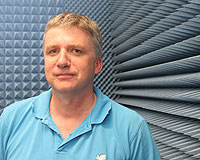 The risk of sensitive information falling into the wrong hands could be eliminated by a new quantum communication process that delivers unprecedented security.
The risk of sensitive information falling into the wrong hands could be eliminated by a new quantum communication process that delivers unprecedented security.
May 24th, 2010
Read more
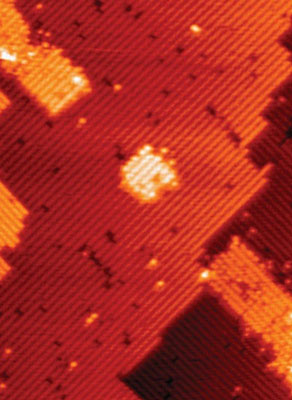 Scientists have literally taken a leap into a new era of computing power by making the world's smallest precision-built transistor - a quantum dot of just seven atoms in a single silicon crystal.
Scientists have literally taken a leap into a new era of computing power by making the world's smallest precision-built transistor - a quantum dot of just seven atoms in a single silicon crystal.
May 24th, 2010
Read more
The gentle touch of a brush on the tongue or cheek can help detect oral cancer with success rates comparable to more invasive techniques like biopsies, according to preliminary studies.
May 21st, 2010
Read more
Nanoparticles covered with the natural pigment melanin may protect bone marrow from the harmful effects of anticancer radiation therapy.
May 21st, 2010
Read more
Using nanoporous silicon particles, two teams of investigators have created drug delivery vehicles capable of ferrying labile molecular therapies deep into the body. Both groups believe their new drug delivery vehicles create new opportunities for developing innovative anticancer therapies.
May 21st, 2010
Read more
A new method for creating supramolecular assemblies of gold nanoparticles functions as highly efficient photothermal agents of a size designed to optimize their delivery to tumors.
May 21st, 2010
Read more
Researchers have created a targeted gold nanoparticle that appears to offer a more sensitive and accurate method for detecting early stage prostate cancer. These nanoparticles may also be useful for detecting lung and breast cancers, too.
May 21st, 2010
Read more







 Subscribe to our Nanotechnology News feed
Subscribe to our Nanotechnology News feed